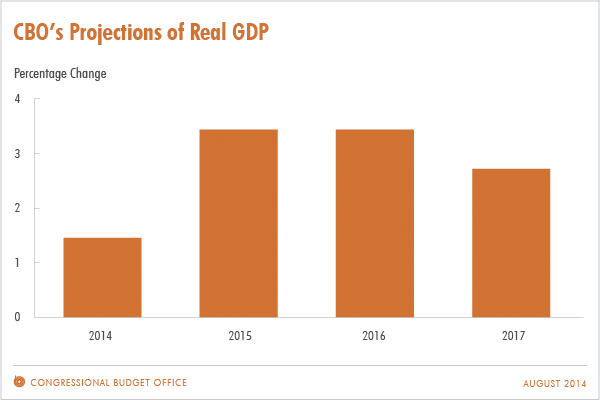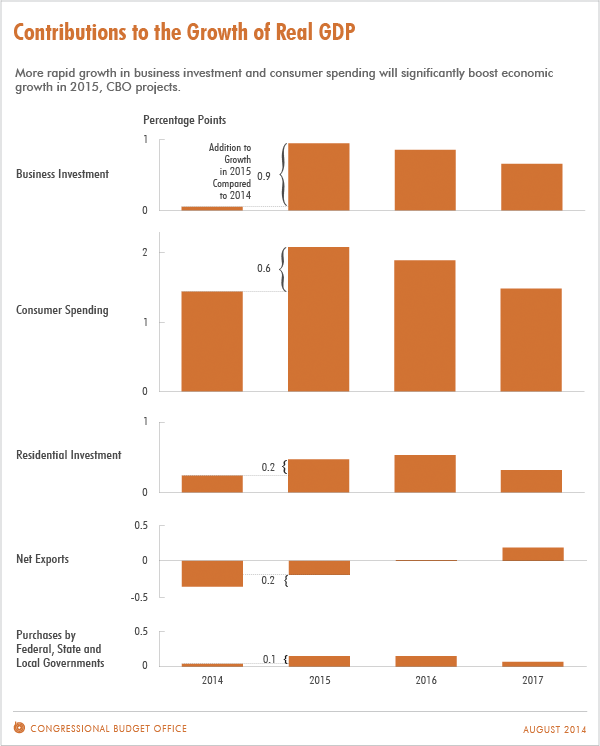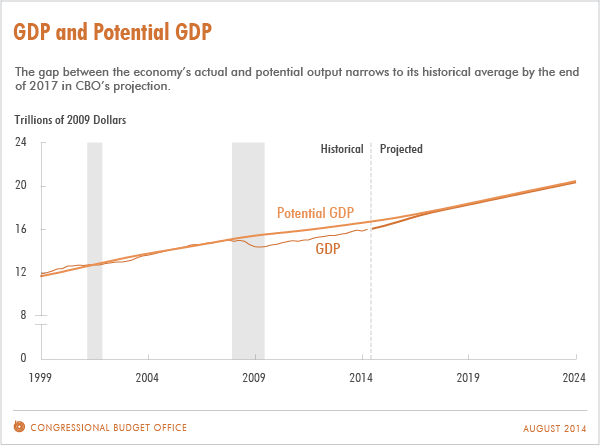Yesterday CBO released its updated budget and economic outlook. To get a quick overview of our new economic forecast, view The Economic Outlook for 2014 to 2024 in 15 Slides.
As described in both the report and slides, CBO anticipates that, under the assumption that current laws governing federal taxes and spending generally remain in place, the economy will grow slowly this year, on balance, and then at a faster but still moderate pace over the next few years. In the first half of this year, real (inflation-adjusted) gross domestic product (GDP) rose at an average annual rate of just 0.9 percent; but CBO expects a stronger second half, so for the year as a whole, the agency projects the rate of growth to be 1.5 percent, as measured by the change from the fourth quarter of 2013 (see the figure below).

CBO anticipates that the economy will expand more rapidly during the remainder of 2014 in part because the effects of some factors that held down growth in the first part of the year, such as bad weather, have abated and because recent data, particularly for employment, indicate that the economic expansion is on firmer ground.
CBO projects that the growth of real GDP will increase after this year, to an annual average rate of 3.4 percent from the fourth quarter of 2014 through the fourth quarter of 2016, before moderating in subsequent years. CBO expects that growth over the next few years will be stronger than it will be this year for the following reasons (see the figure below):
- In response to increased demand for their goods and services, businesses will increase their investments in new structures and equipment at a faster pace and will continue to expand their workforces;
- Consumer spending will also grow more rapidly, spurred by recent gains in household wealth and—with an improving labor market—gains in labor income;
- Fewer vacant housing units, more rapid formation of new households, and further improvement in mortgage markets will lead to larger increases in home building;
- Net exports (exports minus imports) will impose less of a drag on GDP growth next year than this year; and
- Real purchases of goods and services by governments at the federal, state, and local levels (the portion of government spending directly included in GDP) will contribute positively to output growth over the 2015–2017 period after contributing little to growth in 2014 and dampening growth in recent years.

CBO estimates that GDP was about 4 percent less than its potential (maximum sustainable) value at the end of last year. With GDP projected to grow faster than potential GDP in the second half of this year and the next three years, that shortfall is expected to narrow to its historical average by the end of 2017 (see the figure below).

Mark Lasky is an analyst in CBO’s Macroeconomic Analysis Division.

